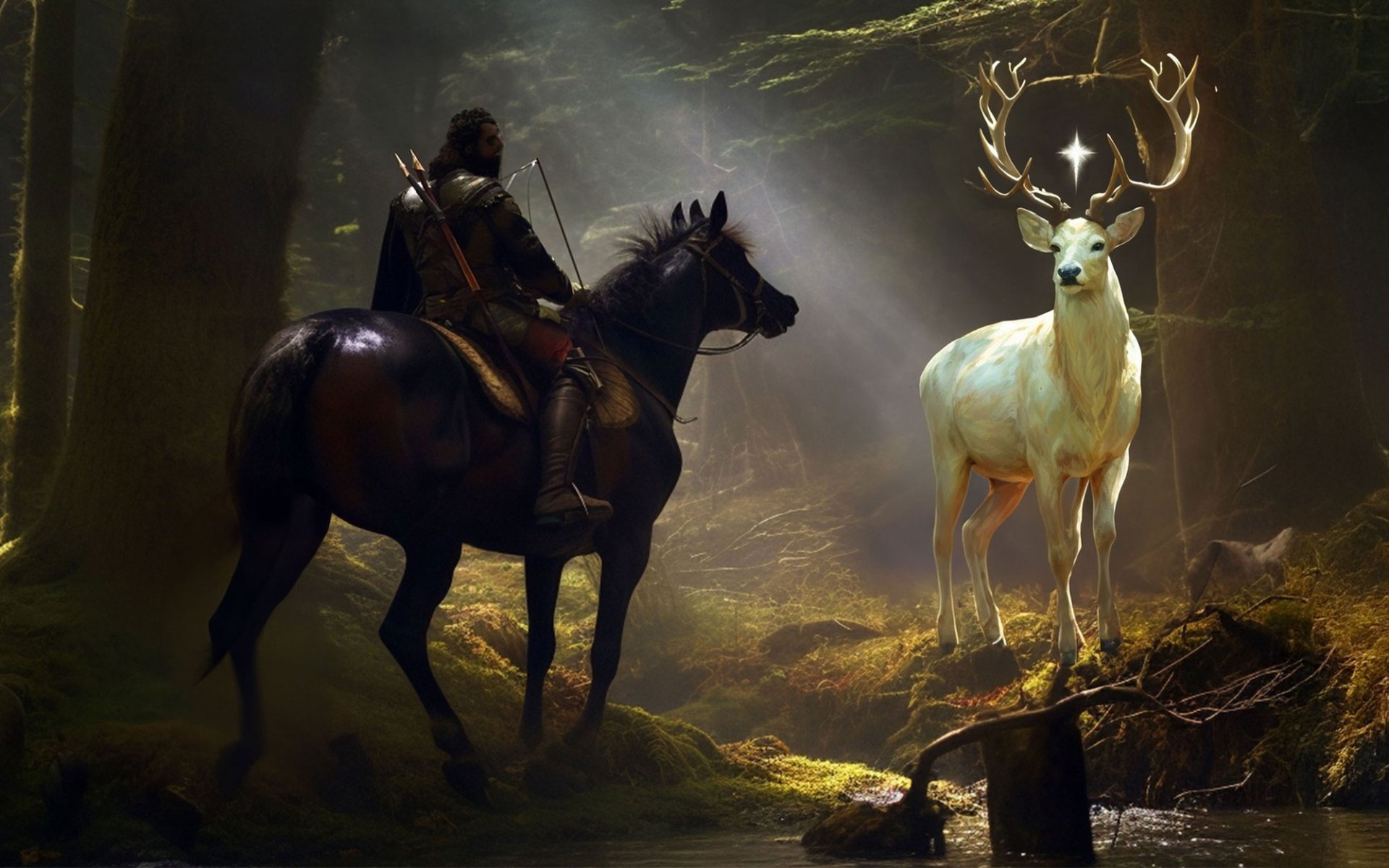Jägermeister

Jägermeister is a herbal liqueur containing a blend of 56 botanicals, with an alcohol content of 35% ABV. If you're a drinker, you've likely seen this liqueur in pubs or bars. It's often consumed as a shot or in a Jäger Bomb, where a Jägermeister shot is dropped into an energy drink. Today, Rimping Supermarket invites you to delve into the fascinating legend behind this iconic beverage.
The Origin: Curt Mast's Passion (1934 AD)
The story of Jägermeister began in Wolfenbüttel, Germany, in 1934, with Curt Mast, the heir to a vinegar and wine business, who took over from his father, Wilhelm Mast.
Curt was passionate about distilling spirits and hunting. After taking over the family business, he set out to create a new beverage. He combined 56 different herbs, including spices, roots, flowers, and fruits, with alcohol to produce a potent liqueur.
Once the perfect recipe was achieved, Curt named this drink Jägermeister, meaning Master Hunter. Due to his profound passion for hunting, he dedicated this name to his beverage. It was a well-known term among the people of Wolfenbüttel, as hunting had been a centuries-old tradition in the region.
The Legend of Saint Hubertus: Inspiration for the Emblem
Beyond its distinctive name, the emblem of the stag with a cross on the green bottle was also inspired by Curt's deep passion and the legend of Saint Hubertus, the patron saint of hunters in the Roman Catholic tradition. The legend tells of a handsome young nobleman named Hubert, blessed with power, prestige, and wealth.
From childhood, Hubert was consumed by his passion for hunting, spending entire days immersed in the forest, setting traps and pursuing game. He gained renown as a skilled archer. Simultaneously, Hubert gradually drifted away from religious ceremonies, eventually losing all interest in religious duties, faith, and devotion to God.
A premonition of disaster began to form just two years after Hubert's marriage when his wife fell ill and passed away shortly after giving birth to their son. Once Hubert had recovered from his grief, his life cycle reverted to its old pattern. The only thing that brought Hubert joy again was hunting.
One morning, while devout worshippers filled the church, Hubert rode his trusted steed into the forest to hunt. But this time was different. Hubert encountered a magnificent mature stag. This stag was almost as large as a horse, with beautiful white fur that shone like a guiding light in the dark forest. Its antlers were tall and graceful, like trees from a fairy tale. This was the most majestic stag Hubert had ever seen, and he pursued it relentlessly deep into the woods.
Suddenly, the stag stopped and turned to face him. Hubert was astonished to behold a vision of a luminous cross floating between the stag's antlers. As Hubert was captivated by the sight, a voice from above spoke to him, saying, "Hubert you must turn back to God and let His teachings guide your life, or you shall descend into damnation."
Hubert immediately dismounted and knelt, replying to the voice, "What does Your Highness wish for me to do?" The voice from above then instructed Hubert to travel to meet Bishop Lambert. With the fading of the voice, everything became calm. The heavenly voice vanished, and so did the stag.
After this vision, Hubert decided to renounce his royal position, giving all his wealth and inheritance to his younger brother. He then journeyed to meet Bishop Lambert, who welcomed him and taught him everything, transforming Hubert back into a man with faith in God and a commitment to doing good for his fellow human beings. When he was deemed ready, the bishop assigned Hubert to live among the people and creatures of the nearby Ardennes Forest, dedicating himself to prayer and the study of scripture, converting villagers and even forest bandits to Christianity.
In time, Hubert was appointed Bishop Hubertus of Liege, serving as a protector and advocate for the people living in the forest and for all creatures. Even after Bishop Hubertus passed away, his good deeds endured, leading to his canonization as Saint Hubertus.
Saint Hubertus's name remains associated with forest conservation and responsible, ethical hunting to this day. The vision of the white stag with the cross transformed a hunter into a revered saint of the forest. This is why Curt incorporated the image from the saint's vision into the Jägermeister brand logo.
Meticulous Bottle Design and Global Popularity
Curt didn't just pay attention to the name and logo; he was equally meticulous in selecting the bottle for his drink. He wanted a durable and shatterproof bottle, so he experimented by dropping various bottle shapes onto an oak floor. One specific shape proved unbreakable: a square bottle with slightly rounded edges. This design was then adopted for Jägermeister liqueur from that moment on.
Initially, Jägermeister was marketed as a digestif, typically consumed after meals. However, its intense flavor quickly gained popularity. By the 1970s, Jägermeister became increasingly popular in pubs and bars as a potent liqueur, often served ice-cold at -18 degrees Celsius, especially given its high alcohol content of 35%.
Over time, Jägermeister's popularity spread beyond Germany, expanding its reach to other continents. Today, it is available in over 140 countries worldwide, attracting drinkers with its distinctive taste and timeless appeal.
Jägermeister's success stems not only from its outstanding quality but also from the company's continued innovation and adaptation to evolving consumer tastes. In recent years, the brand has introduced Limited Edition liqueurs, enticing Jägermeister enthusiasts to try and experience new flavors.


